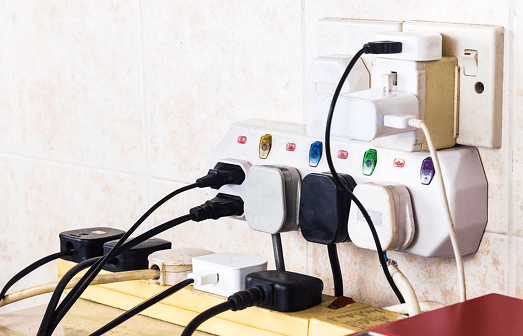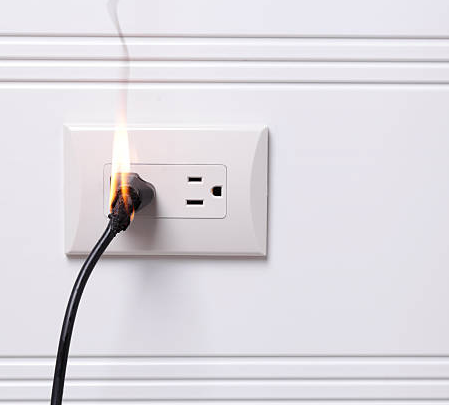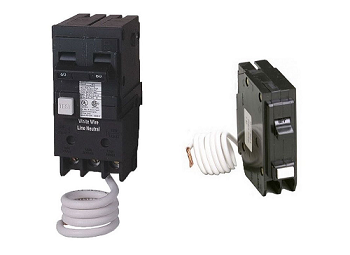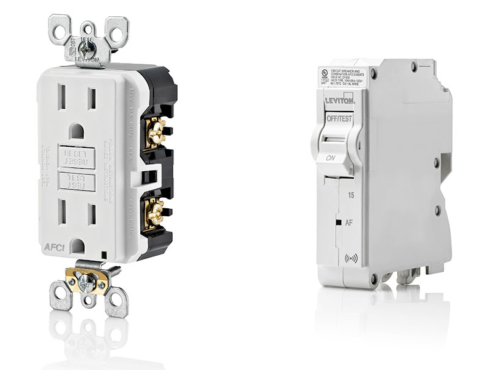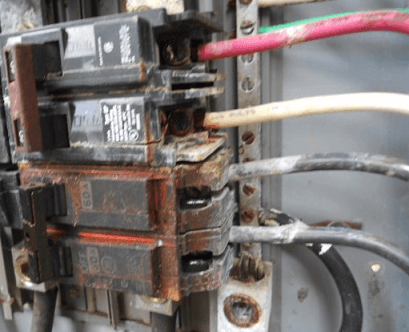Circuit breakers are a key element in the electrical system of a house. Whenever there is a problem in an individual circuit, the circuit breaker breaks the connection and saves the appliance, and prevents other disasters.
If your electrical system is old, then there might be a fuse instead of a circuit breaker. Despite the different terminologies, the idea and functioning are similar. You can identify a tripped circuit breaker if there is a power outage in a particular room. In this situation, you can reset the lever or replace the old fuse.
However, what causes a circuit breaker to trip in the first place? Is there anything you can do to avoid such a situation? Well, to learn more about circuit breakers, read on to find out more.
Outline
ToggleWhat Is A Circuit Breaker?
The circuit breaker can be considered as a switch that blocks the flow of current in a circuit when it is tripped. Thus, it is used to protect the electrical system from any damage. They feature both fixed and moving contacts. Normally, the contacts touch each other and carry the current. When a fault happens, the trip coil is activated and the contacts are pulled apart, and thereby the circuit is opened. This blocks the flow of current.
There are different kinds of circuit breakers and they are categorized on the basis of voltage. Those above 1000V are known as high voltage circuit breakers and those less than 1000 are called low voltage circuit breakers.
How Does a Circuit Breaker Work?
A circuit breaker has 3 main parts-moving contacts, fixed contacts, and an operating coil. In normal conditions, the contacts are in touch and this makes possible the flow of electric current. They are held together by the pressure of spring or air or any other mechanism.
When an overload occurs in the system, the coil becomes energized and this results in the mechanism getting released thus separating the contacts. This in turn opens up the circuit and blocks the flow of current and protects the electrical system from damage.
What Causes the Circuit Breakers to Trip?
1. Overloaded Circuit
This is the most common cause for a tripped circuit breaker. Leaving several appliances that consume heavy load together might cause this issue. Using a microwave oven, washing machine, and an air conditioner on a single circuit will probably overload it.
In such situations, it is better to use one appliance at a time. Or else, you can try contacting your electrician and accommodate the different devices on individual circuits or so. The wires have a finite load that they can handle and if the load exceeds the limit, the breaker will open the circuit.
2. Short Circuits
Short circuits can also cause a circuit breaker to trip. It occurs when a hot wire comes in contact with a neutral wire inside the circuit wiring. This creates a current overload which causes heat in the system and might even result in a fire.
A short circuit can be identified by a burning smell. Also, you need to check out the coverings of the wires. Also, there is no point resetting the lever as the short circuit will again cause it to trip. You need to contact an electrician to solve the problem.
3. Ground Fault Surge
In a ground fault surge, the flow of electricity is directed towards the floor. It occurs when a hot wire comes in contact with a grounding wire or the grounded portion of any system. For example, a metal electrical box. When the circuit breaker detects the sudden surge in the current, the breaker trips.
Also, there is the danger of a person on the ground getting a shock. This is particularly true if the ground is wet. As a result, it is best to contact an electrician if you identify the issue as a ground fault.
4. ARC Fault
An arc is created when a current discharge occurs. Similarly, an arc fault occurs when the current flows through a path that it was not meant to flow through. This creates a high heat that might even burn the material surrounding it. The temperature of such an arc might exceed 10000 degrees Fahrenheit.
There is a special kind of circuit breaker, Arc Fault Circuit Interrupters that can detect a wide range of electrical arc faults. Many of the conventional circuit breakers are unable to detect such arc faults.
5. Older Circuit Breaker
If your house is old, then probably you have an old circuit breaker. It might still function but you would eventually need to replace it in the near future. A circuit breaker has to be replaced every 25-30 years. Moreover, the circuit breakers have to be replaced by a similar model.
6. Loose or Corroded Connection
Loose connections are not very common but they have been reported to trip the circuit breaker. The appliance might be connected to an old outlet or the wire might not have been plugged in tightly. You can fix this issue by tightening the connection.
Final Words
We hope this guide would have helped you to learn more about circuit breakers. There are many reasons why a circuit breaker might trip. If you can’t reset the lever, then you need not hesitate to contact an electrician as it could prove to be dangerous. For any queries regarding the content, do write to us.

